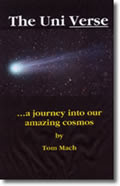 Acclaimed author Don Coldsmith dies
Acclaimed author Don Coldsmith dies
By Patrick Kelley (Emporia Gazette)
Friday, June 26, 2009
Western author Don Coldsmith of Emporia died Thursday, June 25, at the University of Kansas Hospital in Kansas City, Kan. He had suffered a stroke last week.
Coldsmith, who was 83, parlayed the chance find of a relic on the prairie into a series of 29 novels about the Native Americans of the Great Plains before the coming of the Europeans. The Spanish Bit Saga was popular with American readers and was translated into other languages. He was a past president of the Western Writers of America and in 1990 won the organization’s Golden Spur award for his novel “The Changing Wind.” In 2003, the group named him recipient of its Owen Wister Award.
Jim Hoy, fellow writer, lecturer and teacher at Emporia State University, said Coldsmith had a talent for connecting to his readers, even when writing about unfamiliar cultures.
“As a writer, he was just a really good storyteller,” Hoy said. “He had a real knack for universalizing …”
Coldsmith was born Feb. 28, 1926, in Iola, the son of a Methodist minister. After graduation from high school in Coffeyville, he joined the U.S. Army in 1944 and served as a combat medic in the Pacific Theater. After the war, he was assigned to the occupation troops in Japan, where he provided medical care for accused Japanese war criminals, including Prime Minister Hideki Tojo.
After his discharge from the Army, he attended and graduated from Baker University in Baldwin City, then was hired as youth director at a YMCA in Topeka, where he helped to integrate the YMCA swimming pool, the first in the state to be integrated.
He then went to medical school at the University of Kansas, where he received his medical degree in 1958. He practiced family medicine in Emporia until 1988, when he closed his practice and became a full-time writer, working in longhand for transcription. Besides his many novels, Coldsmith also wrote a weekly newspaper column, “Horsin’ Around,” and many magazine articles. He was a popular lecturer on the subject of the West and its history.
He and his wife, Edna, maintained a small ranch on the outskirts of Emporia, and for a time raised appaloosa horses.
In 1986, Coldsmith established the Tallgrass Writers Workshop at Emporia State University to bring aspiring writers together with experienced writers, editors and agents. The 24th workshop begins at the university on Friday.
Survivors include his wife.






